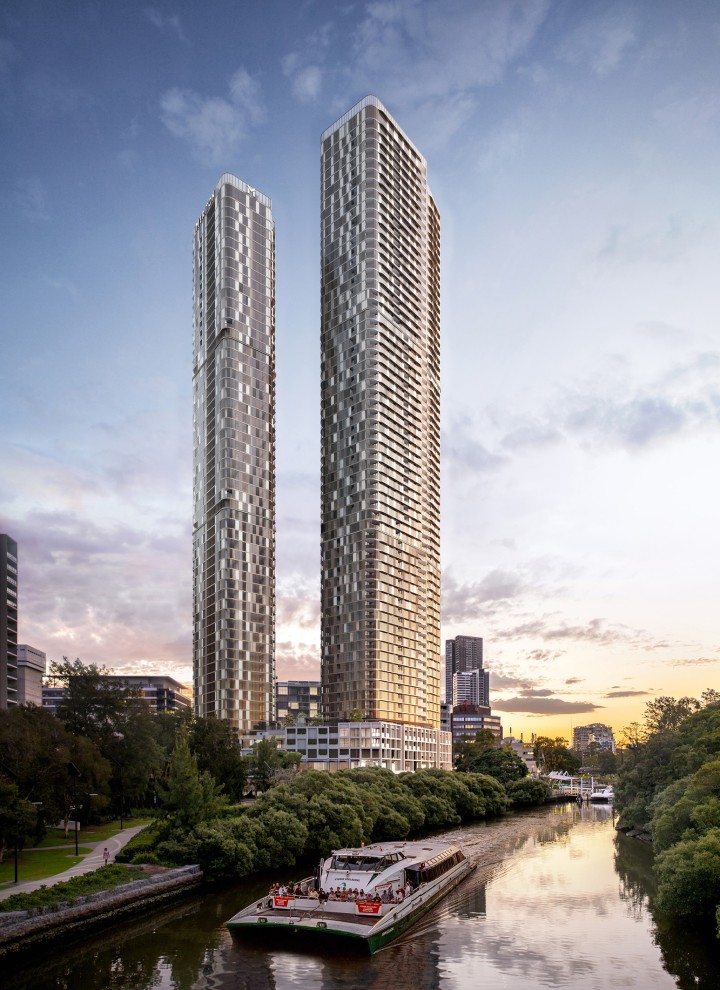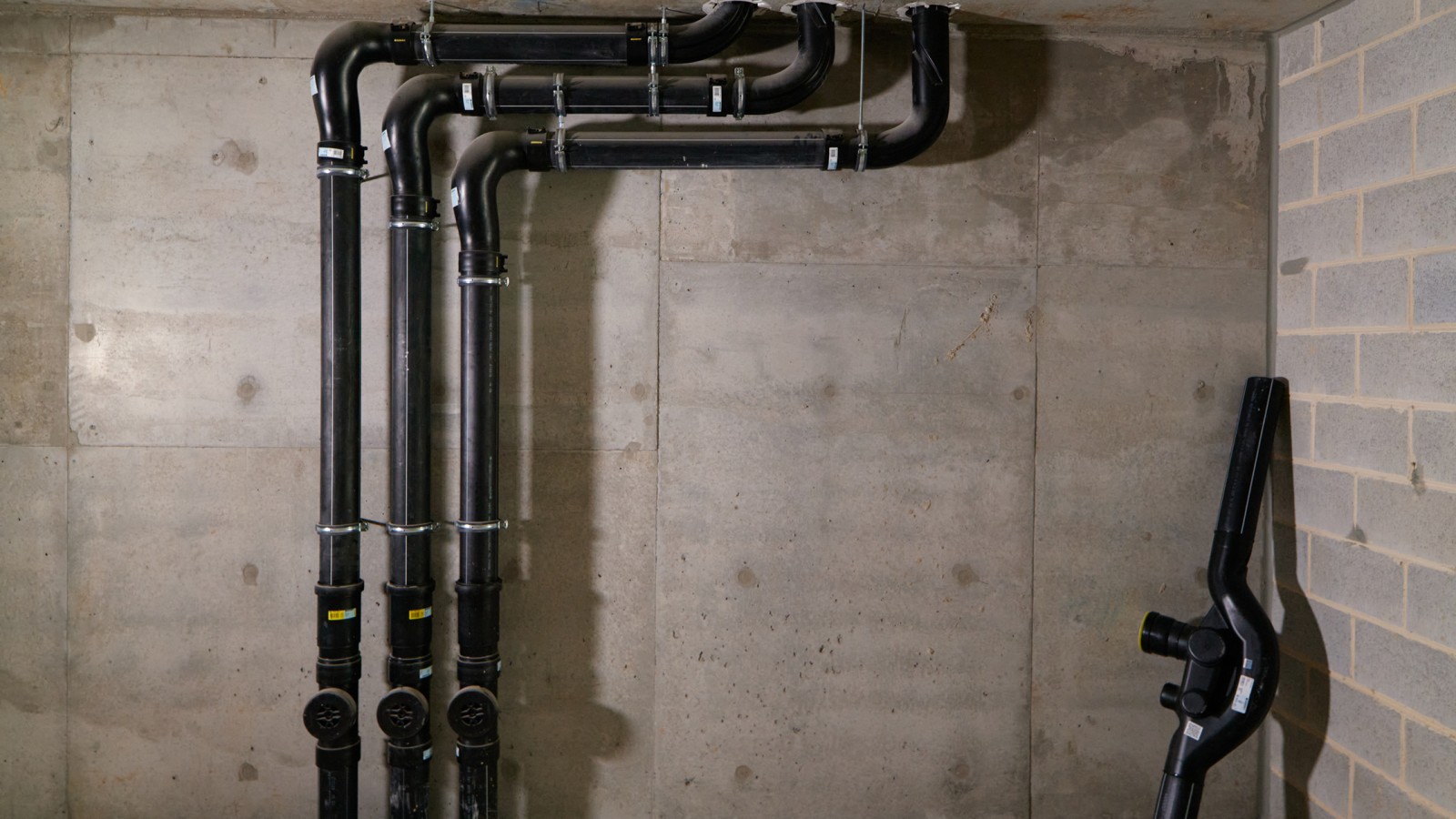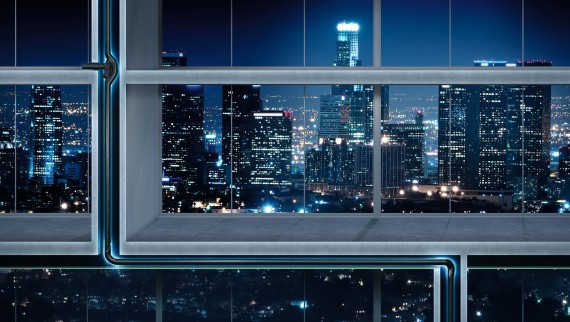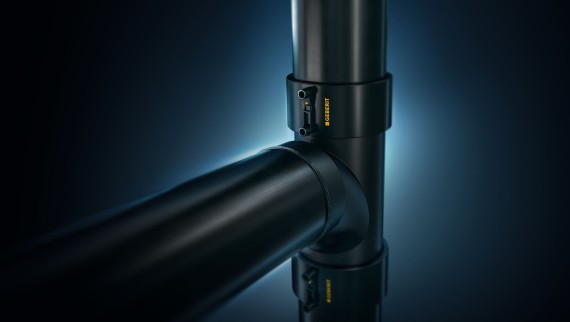Guardians over Sydney's west 180 George Towers, Sydney (AU)
From rural brick houses and eucalyptus trees to the two tallest skyscrapers outside Sydney's city centre. The densification of the suburbs of Australia's largest city is off to an impressive start - and Geberit is playing a decisive role.
If you follow George Street in the Parramatta neighbourhood of Sydney, you could be forgiven for thinking you were in the countryside. Streets are lined with wide strips of grass, often with rows of bungalow-like brick houses on either side. Eucalyptus trees and fire palms provide shade for passers-by.
213 and 189 metres high
On the horizon, two skyscrapers tower into the sky, as if standing guard over the tranquil neighbourhood. At first glance, they seem far away, like part of another world.
But George Street drags on. As you pass small petrol stations, an idyllic park and a sports field, the mighty towers draw closer. And then suddenly you are standing in front of them, letting your gaze wander upwards. A breathtaking picture.
The 180 George Towers are 213 and 189 metres high, by far the tallest buildings in the district and the entire western suburbs of Sydney. They are symbols of the increasing urbanisation of the region.
The height of the buildings serves the purpose of densification, but also of luxury. From above, a magnificent panorama opens up over the coastal basin to the skyline of Sydney's city centre and the forested foothills of the Blue Mountains.
The towers house more than 500 luxury flats and over 300 hotel rooms. Every square metre is expensive to build. This is even more so for high-priced properties with their high fit-out standards. Investors are therefore always keen to maximise the living space on their plot.

More living space thanks to SuperTube
The Geberit SuperTube system developed for the drainage of high-rise buildings proved to be extremely useful. Thanks to the hydraulic optimisation, the system does not require ventilation pipes - the building services shaft can be planned much smaller and the living space is larger.
“SuperTube has major advantages over conventional systems,“ says local hydraulic designer Nick Ilias from Ilias Design. “From the first meeting, we realised that SuperTube would solve many of our planning challenges.“ It did - and also reduced the installation time. The installation company responsible, K-Mac-Plumbing, was delighted.
Managing Director Ken MacDonald says: “Geberit SuperTube takes the complexity out of the installation.“ The integrated system was relevant to the success of the project. “The system was one of the main pillars of quality.“

Facts
Geberit Know-how
Geberit products used in the project
- Geberit SuperTube technology
- Geberit HDPE pipes

Geberit PE SuperTube
Geberit PE SuperTube offers space gaining in high-rise buildings. Compared to a conventional system, it provides a high discharge capacity of 12 l/s but with a smaller dimension of d110.

Geberit PE
Geberit PE is suitable for a wide range of drainage applications in technical building systems and industry thanks to its shockproof properties and resistance to chemicals.
Architects
Architects
- Client: Meriton
- Architect: Woods Bagot
- Opening: 2022